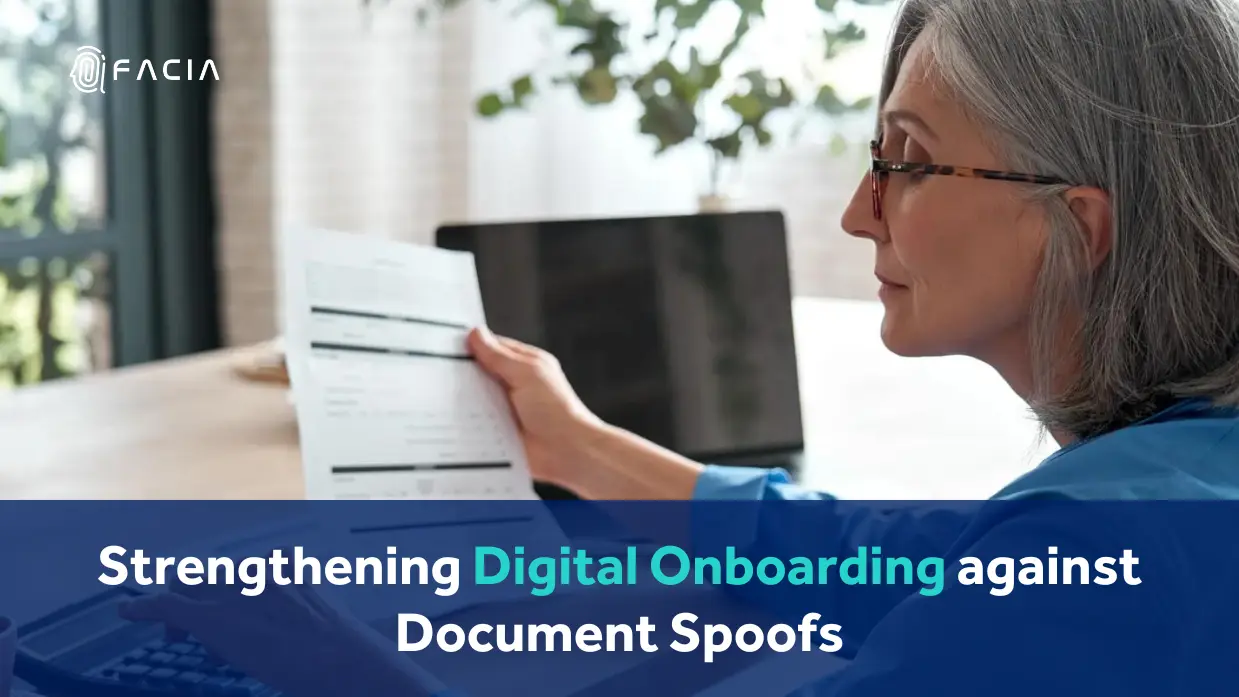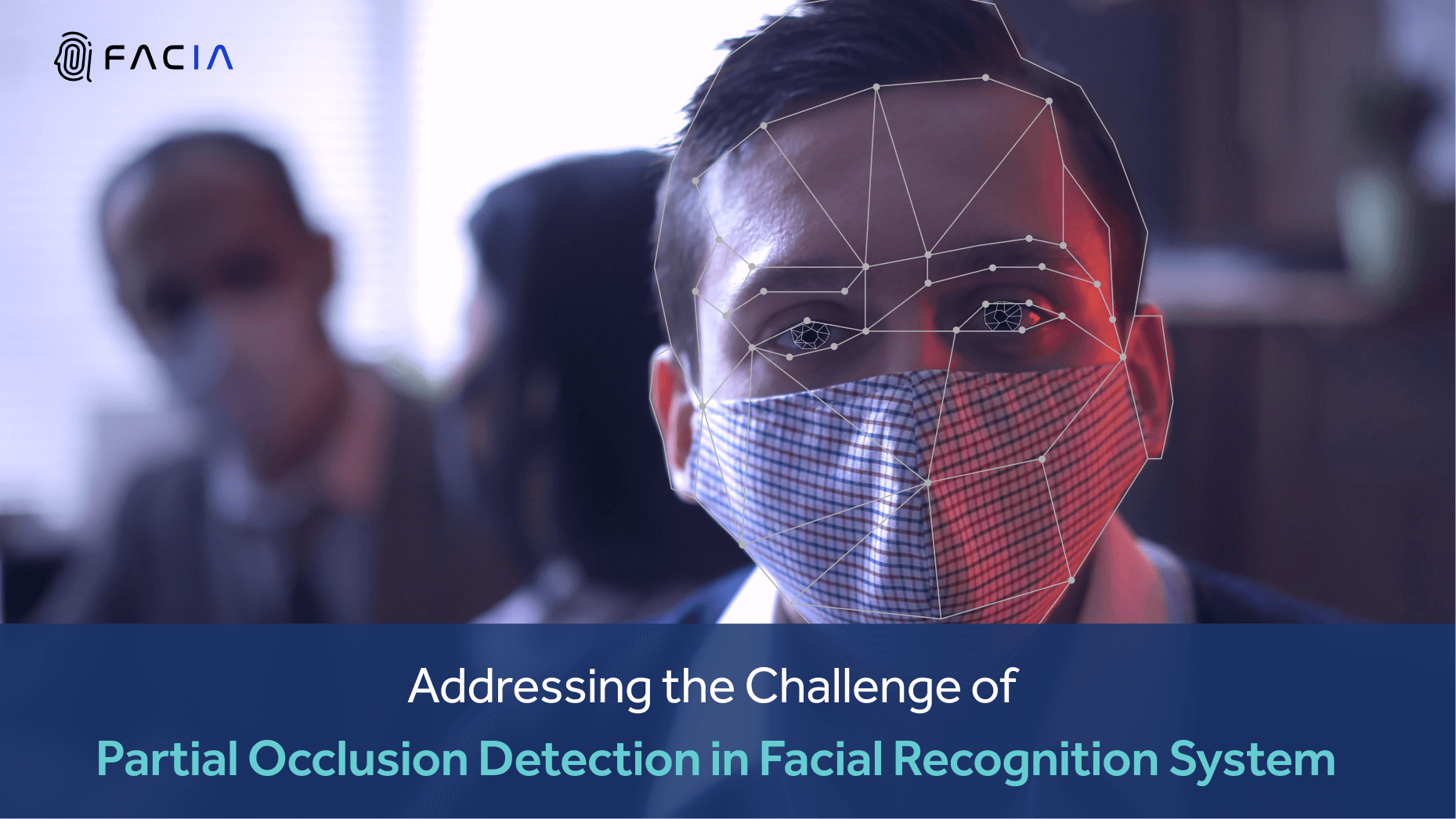
Digital Onboarding Fraud Prevention: Shields Against Document Spoofs
Author: Soban K | 08 Sep 2023In This Post
In the ever-evolving landscape of the digital world, the onboarding process for businesses faces a rising threat: document spoofs. A staggering 90% of document-based attacks are driven by presentation fraud, including prevalent tactics like screen replay attacks. Traditional Know Your Customer (KYC) platforms often fall short when it comes to detecting these cunning manipulations.
Facia’s innovative AI-driven facial recognition technology offers a glimmer of hope, providing cutting-edge document liveness detection features. Being proactive in understanding and combating this form of fraud is paramount for maintaining the integrity of the onboarding process.
Key Highlights
- Digital identity verification is a double-edged sword, providing advantages but also exposing the system to potential fraud.
- Presentation attacks make up over 90% of document-based assaults on digital ID verification platforms.
- Seamless integration into existing systems and user-friendliness are critical factors when selecting anti-fraud solutions.
Document Fraud in Digital Onboarding
To effectively combat document fraud in digital onboarding, it’s vital to understand the various forms that fraudulent documents can take. These can range from complete counterfeits to skilful forgeries and even digital or physical reproductions. Traditional KYC platforms struggle to detect these varied forms of deceit, making advanced fraud prevention techniques all the more essential.
Emerging tactics in document fraud, such as presentation attacks, amplify these threats. Presentation attacks often go undetected by traditional KYC systems, emphasizing the need for more advanced, reliable detection mechanisms to safeguard the integrity of the digital onboarding process.
The Growing Threat of Document Presentation Attacks
Document presentation attacks are fast becoming a grave concern in digital identity verification. These malicious acts, often facilitated by intricate document manipulation techniques, exploit vulnerabilities in existing verification systems.
These attacks serve as a sobering reminder that the techniques employed by fraudsters are continuously evolving. This ever-changing landscape necessitates that cybersecurity professionals keep abreast of the latest trends and adapt their anti-fraud protocols accordingly.
Common Methods Employed in Document Presentation Attacks
Presentation attacks often employ various techniques such as using printed copies, screen replays, or portrait substitutions to deceive identity verification systems.
The increasing occurrences of portrait substitution attacks are particularly concerning. These fraudulent methods pose a serious risk to digital identity verification systems, often undermining customer trust and confidence.
Traditional methods like printed copies continue to be effective, especially when high-quality replicas are involved. Screen replay attacks utilize advancements in digital technology, making their detection incredibly challenging. This persistent threat landscape underscores the need for innovative countermeasures to protect against evolving document fraud tactics.
The Growing Menace of Screen Replay Attacks
Screen replay attacks have emerged as a formidable form of document fraud, undermining even the most secure identity verification systems. Their increasing prevalence is concerning due to their potential to evade conventional security protocols and jeopardize sensitive data.
To delve deeper into screen replay attacks:
- What They Are:
These are attacks where fraudsters display a digital replica of a valid document on a device screen to deceive identity verification systems. - Why They Are Problematic:
These attacks often go undetected by traditional means, making the prevention of screen replay attacks a top priority. - How to Combat Them:
Solutions like Facia utilize sophisticated AI algorithms for liveness detection, effectively identifying and thwarting screen replay attacks.
Role of Liveness Detection
Document liveness detection plays an indispensable role in mitigating the risks associated with document fraud. This technology serves as a line of defence against presentation attacks by confirming the authenticity of the presented documents.
However, while liveness detection offers numerous advantages such as speed, convenience, and global applicability, it also poses new challenges. These include ensuring seamless integration with existing systems and maintaining a user-friendly interface.
Essential Features of Effective Liveness Detection Solutions
Effective liveness detection solutions should incorporate various key features like the ability to detect text and font manipulations, recognize fraudulent reproductions and counterfeits, and identify commonly used methods in document-based attacks.
Moreover, these solutions should overcome the challenges of integrating into existing KYC procedures without disrupting the user experience, all while complying with global identity document standards.
The Necessity of Fraud Detection in Onboarding Integrity
Understanding the importance of fraud detection in preserving the integrity of the onboarding process is critical. Document fraud can quickly erode customer trust and tarnish a brand’s reputation. In this context, artificial intelligence emerges as a vital tool in identifying and neutralizing such threats. AI algorithms sift through complex data patterns to proactively identify potential risks, thereby strengthening the overall security posture.
Conclusion
The ceaseless evolution of document fraud tactics makes it imperative for businesses to stay one step ahead. Leveraging advanced technologies like AI and liveness detection is no longer just an option; it’s a necessity. Are you ready to safeguard your digital onboarding process against the burgeoning threats of document fraud?
Contact us to learn how Facia’s Facial recognition technology can fortify your digital onboarding process against evolving document fraud tactics.
By integrating advanced liveness detection features, you not only elevate the security of your onboarding processes but also cultivate trust, the cornerstone of any customer-centric business.
Frequently Asked Questions
Document spoofing is when fake or altered documents are used to deceive digital onboarding processes. It’s a threat because it allows fraudsters to gain access to services or accounts by tricking the system.
Businesses can prevent document spoofing by using advanced identity verification methods like biometric scans, AI-based pattern recognition, and liveness detection to ensure the authenticity of submitted documents.
Common signs of document spoofing include inconsistent fonts, unusual watermarks, pixelation, and mismatched information. These indicators signal potential fraud attempts during digital onboarding.
Liveness detection confirms that a live person is present during the onboarding process, preventing fraudsters from using manipulated images or videos to spoof identity documents.
Yes, technology plays a critical role. Advanced AI-driven solutions can analyze document attributes, detect anomalies, and perform liveness checks, making it highly effective in thwarting document spoofing attempts during digital onboarding.






